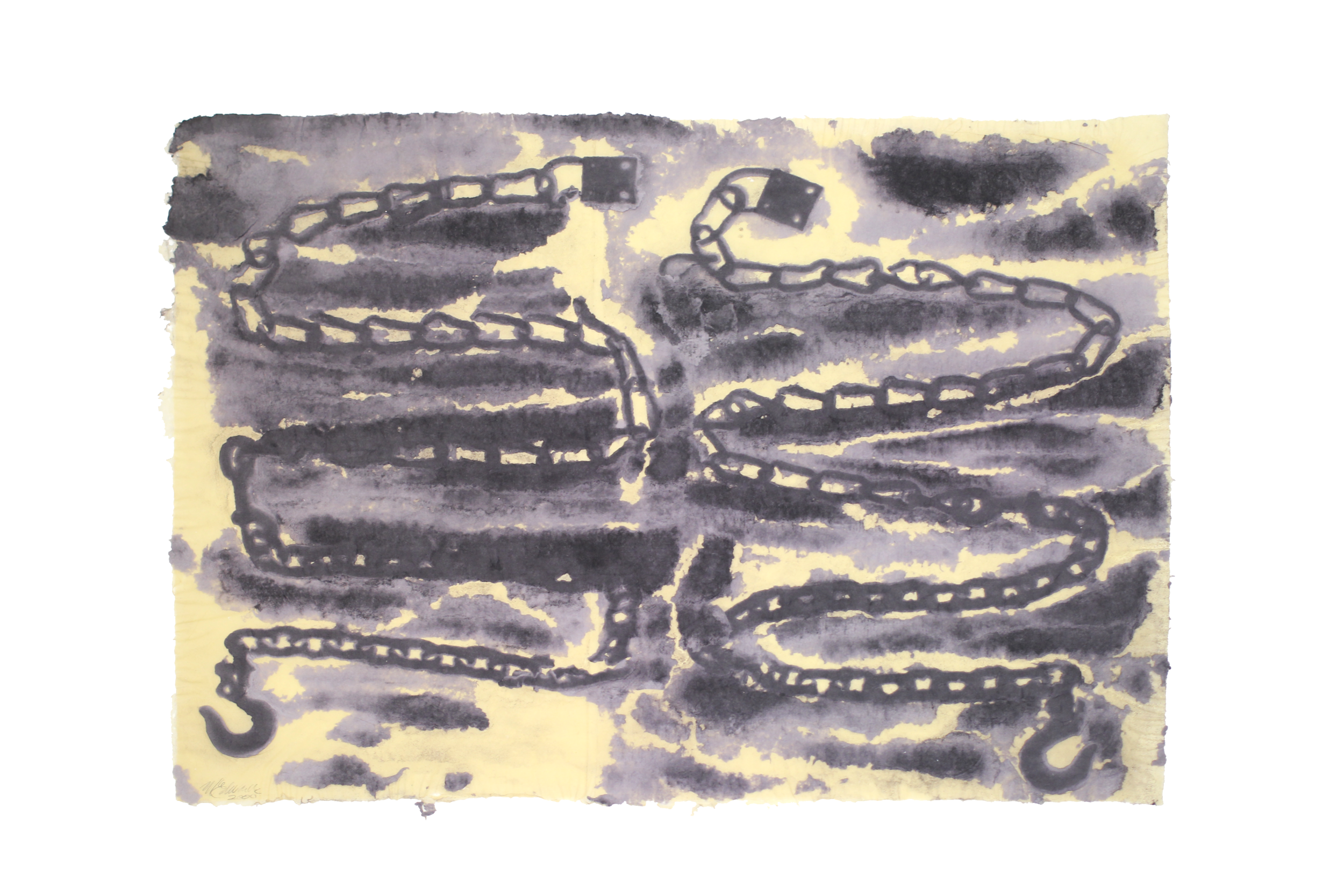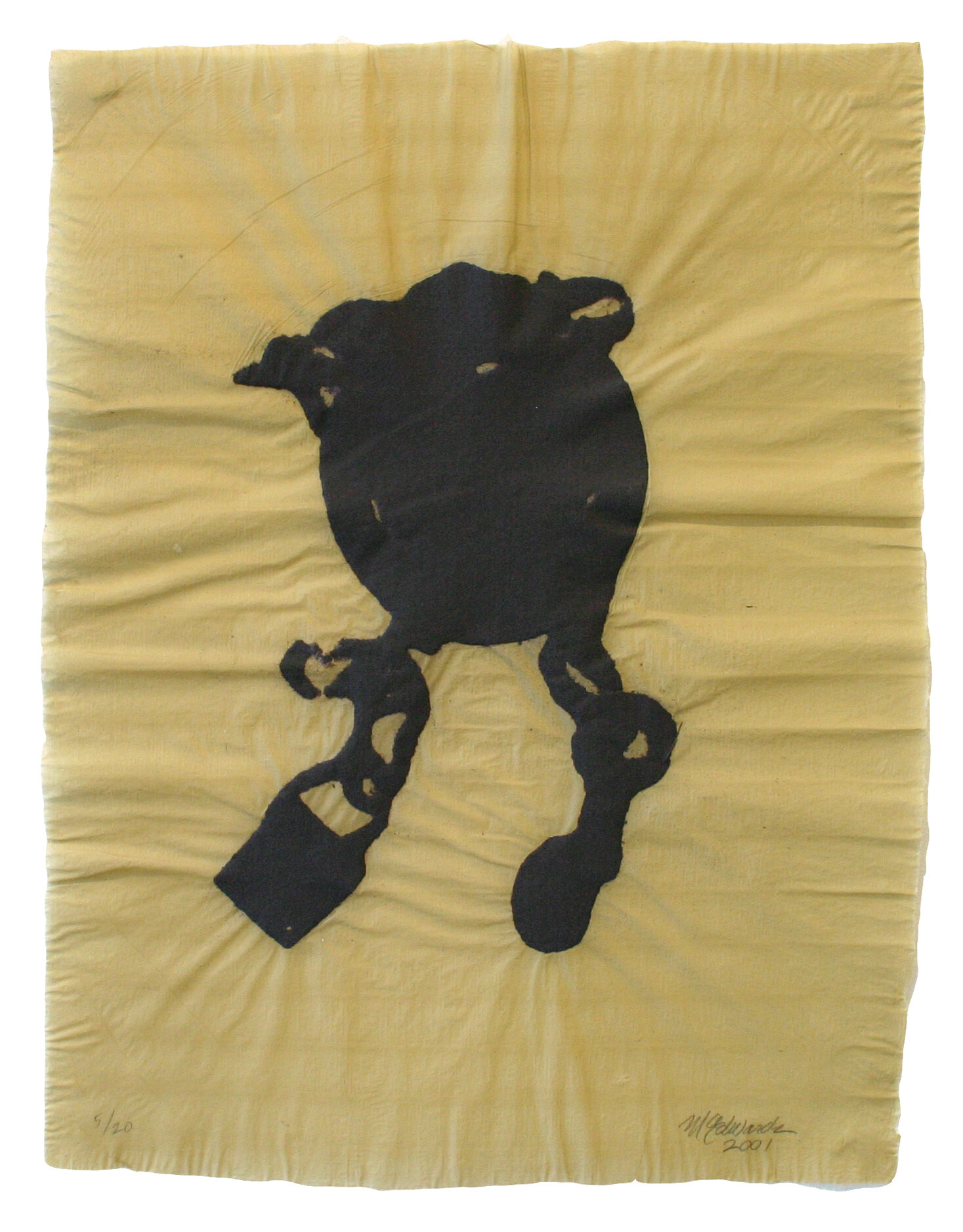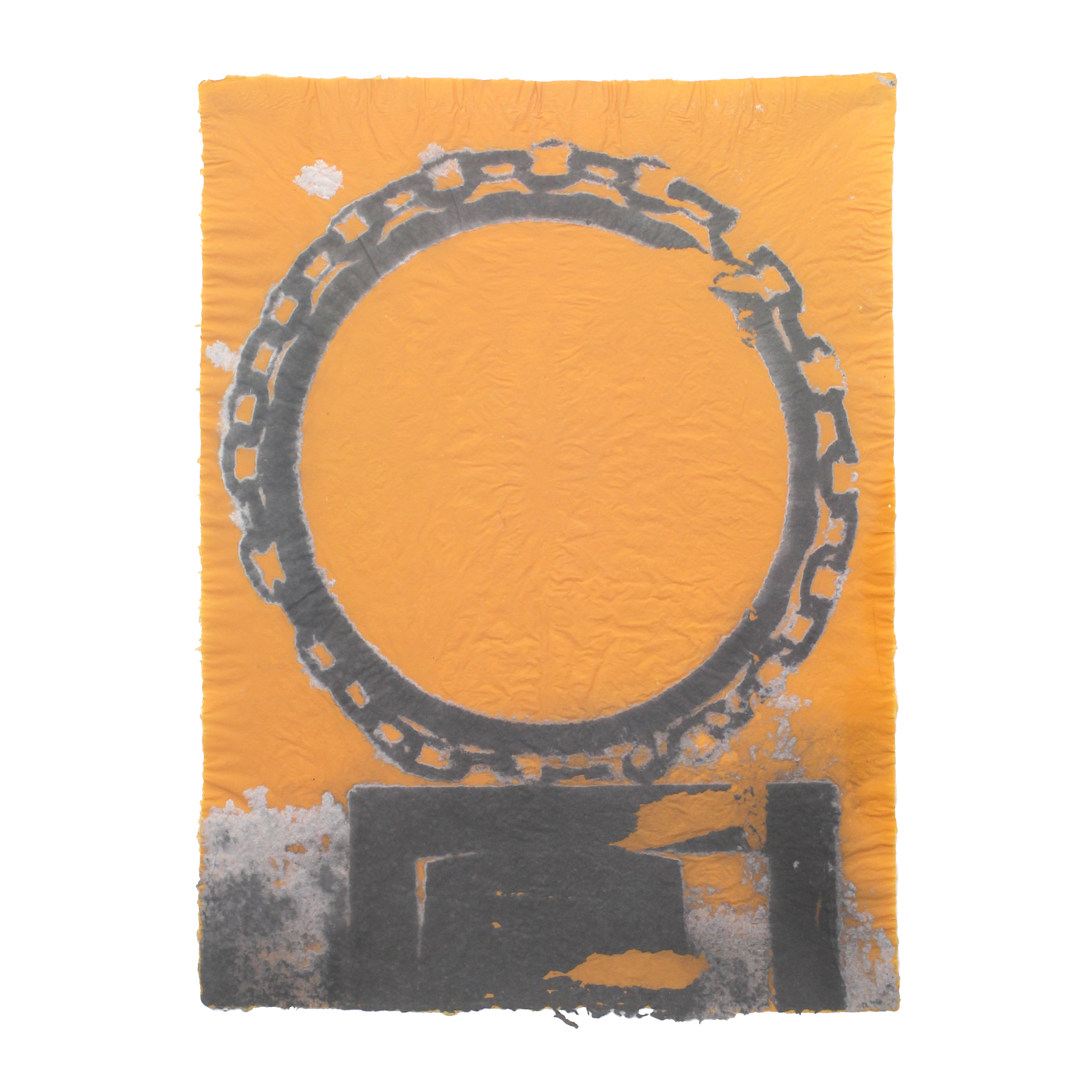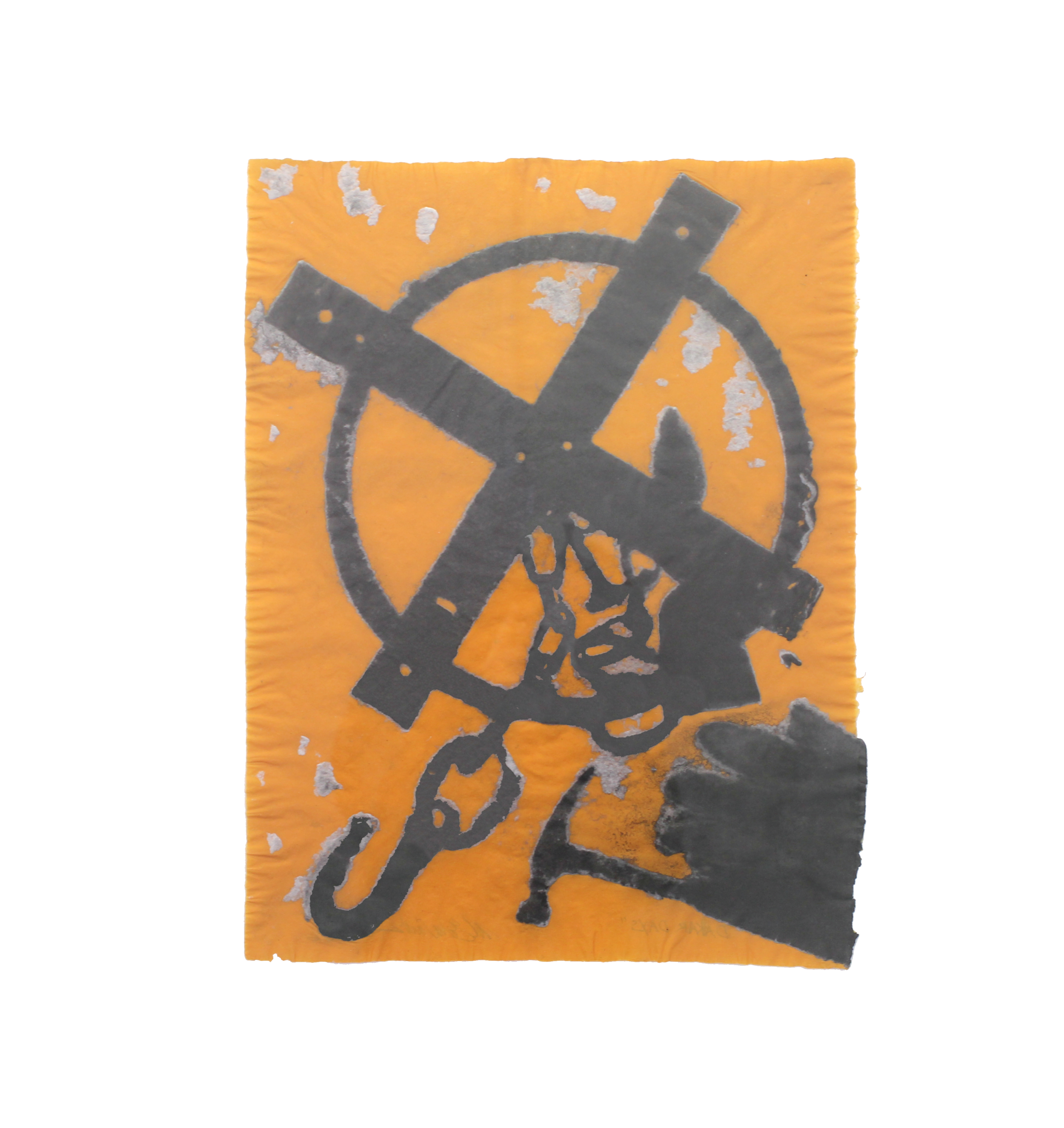Melvin Edwards
Melvin Edwards
Lab Grant Resident 2001
“For me, the past is never gone. Often, an idea that I used when I was very young and very much a beginner might get transposed to another level down the road, as though on a parallel track rather than a 1-2-3-4- kind of progression. When it comes to being on paper - or IN paper in this case - it’s very related to ideas where the sculpture and graphics come together. Using the stencil process and the concept of negative space - to be able to use the waterhose and blow stuff away, but at the same time to leave stuff - it’s almost like the process of painting with washes and solid areas. And here, we used three-dimensional objects as stencils - we’ve got shape and form...”
— Melvin Edwards, “Melvin Edwards: Aqua y Acero en Papel,” Lab Grant Publication Series No. 1, Dieu Donné
About the Artist
Melvin Edwards (b. 1937, Houston, TX) is a pioneer in the history of contemporary African-American art. Edwards is celebrated for his distinctive sculptures and three-dimensional installations created from welded steel, barbed wire, chain and machine parts. While the artist's formal language clearly engages with the history of abstraction and modern sculpture, Edwards' work is born out of the social and political turmoil of the civil rights movement in the United States. Themes of race, protest and social injustice permeate the artist’s practice.
The artist's career began in southern California with a solo exhibition at the Santa Barbara Museum of Art in 1965. In 1970, Edwards went on to become the first African-American sculptor to have a solo exhibition at the Whitney Museum of American Art in New York, presenting a ground-breaking installation of work made from barbed wire. Toying with the duplicity of meaning and contradictions embedded in objects, the artist states in the accompanying catalogue:
"I have always understood the brutalist connotations inherent in materials like barbed wire and links of chain and my creative thoughts have always anticipated the beauty of utilizing that necessary complexity which arises from the use of these materials in what could be called a straight formalist style."
Edwards is perhaps best known for his ‘Lynch Fragments' series. Inspired by the practices of modernists such as Julio González and David Smith, the series spans three distinct periods from the artist's life; the 1960s, during which work evolved in response to racial violence in the United States; the 1970s, in protest against the Vietnam War; and from 1978 to the present, during which work for the artist became a vehicle to honour individuals, consider nostalgia and explore his interest in African culture and artefacts. Both the materials - metal objects such as hammers and chisels forged together - and the titles of individual works refer to hard physical labour and the history of brutality against the black body.
Edwards' work currently features in the new hang of the collection at MoMA, New York. His work is included in the landmark touring exhibition ‘Soul of a Nation: Art in the Age of Black Power', initiated by Tate Modern in 2017. In April 2020, the artist exhibited at Glasgow International in Scotland. Public Art Fund will present the first major survey of his outdoor works at City Hall Park, New York in the coming year. Edwards was recently awarded the prestigious US Artists Fellowship 2020.
Notable solo exhibitions include: ‘Melvin Edwards’, auroras, São Paulo, Brazil; travelling to Museu da República, Rio de Janeiro, Brazil; Museu de Arte Moderna da Bahia (MAM), Salvador, Brazil; Museu Nacional da República, Brasilia, Brazil and Museu Afro Brasil, São Paulo, Brazil (2019–2020); ‘Melvin Edwards: Crossroads', Baltimore Museum of Art, Maryland, USA; travelling to Ogden Museum of Southern Art, New Orleans, Louisiana, USA and University of Southern California Fisher Museum of Art, Los Angeles, California, USA (2019-2020); ‘Melvin Edwards: Lynch Fragments', MASP, São Paulo, Brazil (2018); ‘Melvin Edwards: Festivals, Funerals and New Life', David Winton Bell Gallery, Brown University, Rhode Island, USA (2017-2018); ‘Melvin Edwards', Oklahoma Contemporary, Oklahoma, USA (2016); ‘Melvin Edwards: Five Decades', Nasher Sculpture Center, Dallas, Texas, USA; which travelled to Zimmerli Art Museum at Rutgers University, New Jersey, USA and Columbus Museum of Art, Columbus, Ohio, USA (2015-2016); ‘Melvin Edwards', Stephen Friedman Gallery, London, UK (2014-2015); ‘Melvin Edwards: Lynch Fragments', Flint Institute of Arts, Flint, Michigan, USA (1998); ‘Melvin Edwards Sculpture: A Thirty-Year Retrospective 1963-1993', McNay Art Museum, San Antonio, Texas, USA (1995); ‘The Sculpture of Melvin Edwards', UNESCO, Paris, France (1984); ‘Melvin Edwards', The Studio Museum in Harlem, New York, USA (1979); ‘Melvin Edwards', Whitney Museum of American Art, New York, USA (1970); ‘Melvin Edwards', Walker Art Center, Minneapolis, Minnesota, USA (1968) and ‘Melvin Edwards', Santa Barbara Museum of Art, Santa Barbara, California, USA (1965).
Edwards' works are featured in many prominent collections internationally including Los Angeles County Museum of Art, California, USA; Museum of Fine Arts, Texas, USA; Smithsonian American Art Museum, Washington D.C., USA; Museum of Modern Art, New York, USA; Metropolitan Museum of Art, New York, USA; The Studio Museum in Harlem, New York, USA and Brooklyn Museum of Art, New York, USA. (Source: Stephen Friedman Gallery)























